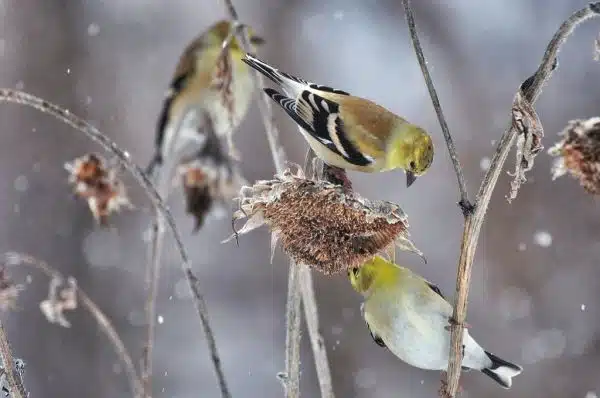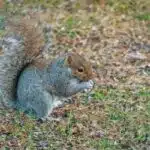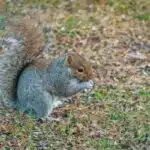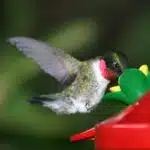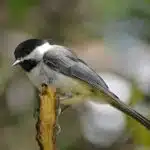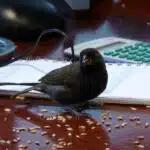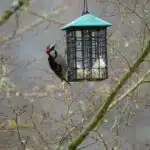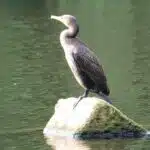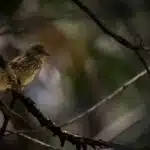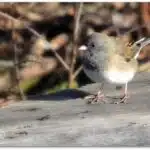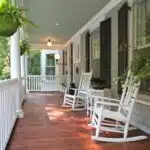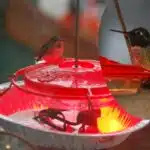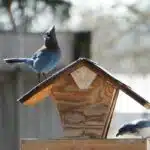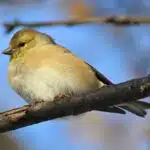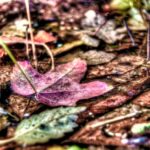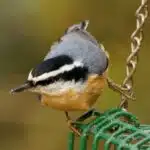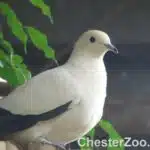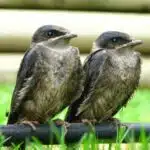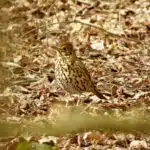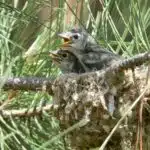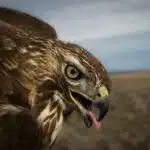During the winter months, bird enthusiasts have a unique opportunity to attract winter finches to their backyard feeders. These beautiful birds are known for their vibrant colors and unique behaviors, making them a sought-after sighting for birdwatchers around the world. However, attracting these birds takes more than just putting out a few seeds – it requires a strategic approach that takes into account their natural habitat and feeding preferences.
As an avian wildlife expert, I have spent years studying the behavior of winter finches and developing strategies for attracting them to backyard feeders. In this article, I will share some of my top tips for creating an environment that is inviting to these stunning creatures. Whether you are a seasoned bird watcher or simply looking to add some color to your backyard during the winter months, these tips will help you create an environment that is sure to attract a wide variety of winter finches and other feathered friends.
Understanding Winter Finch Behavior
Birdwatchers and nature enthusiasts alike are familiar with the phrase “birds of a feather flock together.” This idiom is particularly true for winter finches, which exhibit social behavior during feeding and roosting. Observing their behavior can give us valuable insights into their feeding habits, allowing us to better attract them to our feeders.
During the winter months, some species of finches form large flocks that travel in search of food. Observing these flocks can be helpful in understanding their preferences. For example, if you notice a group of finches gathering around certain trees or shrubs, it may indicate that these plants provide a food source they prefer. Additionally, observing their behavior at your feeder can help you identify which type of food they enjoy most.
Winter finches have a unique feeding style compared to other backyard birds. They tend to cling to feeders or tree branches while eating instead of perching on them like many other birds. This means that choosing the right feeder is crucial in attracting them. Providing a feeder with perches for resting and easy access to food can increase the chances of attracting these birds to your yard.
By understanding winter finches’ behavior and feeding habits, we can take steps towards attracting them to our backyard feeders. Choosing the right feeder design is one such step that can make all the difference in creating an inviting environment for these beautiful birds.
Choosing The Right Feeder
When choosing the right feeder for winter finches, it is important to consider the type of bird you want to attract. Not all feeders are created equal, and certain species may prefer different types of feeders. Tube feeders are a popular choice for finches because they allow multiple birds to eat at once and keep the seed dry. Mesh feeders are another option that allows for easy access for smaller birds like chickadees and nuthatches.
Feeder placement is also an important consideration when attracting winter finches. Placing your feeder in a location that is easily visible from inside your home will allow you to enjoy watching the birds even on cold winter days. However, it is important to place the feeder away from trees or other structures where squirrels can climb and steal seed. Consider using squirrel baffles or hanging your feeder from a pole with a squirrel guard to deter these pesky creatures.
In addition to selecting the right feeder and placing it in the correct location, it is important to take steps towards squirrel deterrence. Squirrels can quickly empty a feeder, leaving nothing for your desired bird species. By taking steps such as using safflower seed, which squirrels do not prefer, or installing a squirrel-proof feeder, you can help ensure that your feeding efforts are not wasted. Overall, by choosing the right feeder and being mindful of placement and squirrel deterrence techniques, you can attract beautiful winter finches to your backyard for hours of enjoyment.
To further enhance your success in attracting winter finches, selecting the right seed mix is crucial. By offering a variety of seeds such as nyjer, black oil sunflower seeds, millet, cracked corn and peanuts (unsalted), you can appeal to a wider range of species and increase your chances of seeing these beautiful visitors at your feeder.
Selecting The Right Seed Mix
When it comes to attracting winter finches, selecting the right seed mix is crucial. The most popular types of seeds for these birds are black oil sunflower seeds and nyjer seeds. These seeds are high in fat and protein, making them ideal for birds that need to bulk up for the cold winter months. It’s important to note that birdseed has a limited shelf life, so proper seed storage is essential. Keep your seed in a dry, cool place to prevent mold growth and spoilage.
In addition to selecting the right type of seed, it’s also important to choose the right seed dispensers. Winter finches prefer feeders with perches where they can sit while eating. Tube feeders are a popular choice because they keep the seed dry and allow multiple birds to feed at once. Hopper feeders are another option but may not be as effective in keeping the seed dry during wet weather conditions.
Properly selecting and storing your birdseed is just one step towards attracting winter finches. Offering water sources is another important factor that can attract these birds to your yard. By providing fresh water daily, you’ll not only attract finches but also other species of birds who may appreciate a drink or bath during the cold months. Consider adding a heated birdbath or using a bird-friendly heater to ensure water doesn’t freeze over during frigid temperatures.
Offering Water Sources
Heat is essential to attract winter finches, as they require a reliable source of warm water to survive the colder months. Careful consideration should be taken when determining the location of feeders, as they should be placed in areas with ample shelter from the wind and sun. Different types of food should be offered to attract different species of winter finches. Suet, black oil sunflower seeds, and nyjer seeds are all examples of suitable food choices. Additional foods such as cracked corn and millet can further increase the amount of species attracted. Providing a birdbath heater is a great way to ensure a reliable source of water for the birds. Finally, the feeders should be monitored regularly to ensure the food and water remain fresh.
Providing Heat
In order to attract winter finches, providing heat is an essential factor that should not be overlooked. The benefits of offering a warm shelter for these birds are numerous. Firstly, it helps them conserve energy that would have otherwise been spent on keeping their body temperature stable. Secondly, it increases their chances of survival during harsh weather conditions.
There are various types of heating mechanisms that can be used to provide warmth for winter finches. One of the most effective ways is through the use of heated bird baths or water sources. These devices provide warmth and moisture which are crucial for the survival of these birds during the winter season. Additionally, placing a heater near bird feeders can also help keep the food from freezing over, making it easily accessible for the birds.
It is important to note that when providing heat sources for winter finches, safety measures should be put in place to avoid accidents such as electrocution or fires. It is also recommended to use energy-efficient heating devices to minimize energy consumption and reduce costs. By providing adequate heat sources, one can attract more winter finches and contribute towards their well-being during the cold season without putting too much strain on resources.
Location Of Feeders
Feeder placement plays a crucial role in attracting winter finches. To maximize the chances of attracting these birds, it is important to consider their feeding behavior and natural habitat. Placing feeders near trees or shrubs can provide cover for the birds and make them feel more secure while feeding. It is also recommended to place multiple feeders in different locations to avoid overcrowding and competition among the birds.
Another factor to consider when placing feeders is accessibility. The feeders should be placed in areas that are easily accessible for the birds without being obstructed by any obstacles such as branches or buildings. This will make it easier for them to access food and reduce the amount of energy they need to spend while searching for food.
Observing bird behavior can also help determine the best location for feeders. Winter finches tend to prefer areas with open spaces and a clear view of their surroundings which allows them to spot potential predators easily. Therefore, placing feeders near windows or other structures that may obstruct their view should be avoided. By considering these factors, one can attract more winter finches and contribute towards their well-being during the cold season.
Types Of Food
Feeder placement and seed storage are crucial factors in attracting winter finches to backyard feeders. However, another important consideration is the type of food being offered. Winter finches have unique dietary needs that vary depending on the species. Therefore, it is essential to provide a variety of foods that cater to their specific nutritional requirements.
One common food source for winter finches is black oil sunflower seeds. These seeds are high in fat and protein, making them an excellent energy source for birds during the cold season. In addition, nyjer or thistle seeds are also popular among winter finches such as goldfinches and redpolls. These tiny seeds are rich in oil and provide essential nutrients for these birds’ well-being.
Another food type that can attract winter finches is suet cakes. Suet cakes are made from animal fat and can be easily stored in feeders or hung from branches. They are especially beneficial for woodpeckers, nuthatches, and other birds that require higher levels of protein in their diet. By offering a combination of these foods along with fresh water sources, one can create an ideal environment for attracting winter finches to their backyard feeders.
In conclusion, understanding the dietary needs of winter finches is essential when it comes to offering food through bird feeders. By providing a variety of high-quality foods such as black oil sunflower seeds, nyjer/thistle seeds, and suet cakes while maintaining fresh water sources will increase the chances of attracting these beautiful birds to our backyards during the cold season.
Providing Shelter
As we have discussed in the previous section, offering water sources is a great way to attract winter finches. However, it is not enough to ensure their survival during the harsh winter months. Providing shelter is equally important for these birds.
Building structures that mimic natural habitats of winter finches can provide them with much-needed protection from cold weather and predators. Creative designs such as nesting boxes and roosting pockets are effective ways to provide shelter for these birds. These structures should be placed in areas where finches are known to frequent, such as near bird feeders.
To further enhance the effectiveness of these shelters, it is important to understand migration patterns of winter finches. By doing so, we can determine the best time to put up these structures and attract more of these birds to our backyard. This knowledge can also help us provide proper food and water sources for them during their stay.
- Building structures:
- Nesting boxes
- Roosting pockets
Providing shelter is an essential part of attracting winter finches to our backyard. By building unique structures that mimic their natural habitats, we can give them a safe place to rest during extreme weather conditions. Understanding migration patterns will help us determine the best time to put up these shelters and attract more of these beautiful birds.
Understanding Migration Patterns
Bird migration patterns are fascinating and complex. In order to attract winter finches, it is important to understand their behavior and movements during the colder months. Many birds, including finches, migrate in response to changes in temperature and food availability. This means that different species of finches may be found in different regions throughout the winter.
One way to identify common winter finch species is by their unique calls. For example, the red crossbill has a distinctive call that sounds like two sticks being rubbed together. The pine siskin’s call is a high-pitched “zreeee.” Learning these calls can help birdwatchers locate and observe finches in their natural habitats.
It is also important to note that not all winter finches migrate south for the winter. Some species, such as the pine grosbeak, actually move farther north in search of food. By understanding these migration patterns and behaviors, bird enthusiasts can better prepare for attracting and observing these beautiful creatures in the winter months.
Understanding bird migration patterns and identifying common winter finch species are crucial steps towards attracting these birds to your backyard. In the next section, we will explore how providing suet and other treats can further increase your chances of attracting winter finches.
Using Suet And Other Treats
High-fat foods, such as suet, are an excellent way to attract winter finches. These birds need high-energy food sources during the colder months, and suet provides just that. However, for those who prefer not to use suet or want to switch things up, there are alternatives available.
One option is to provide other high-fat foods in place of suet. Nuts, seeds, and peanut butter are all great choices. Additionally, fruit such as apples and oranges can be sliced and placed on a platform feeder for finches to enjoy. Another alternative is to make your own bird feeders using materials found around the house. DIY feeders can be made from items such as pine cones, milk jugs, and even old coffee mugs.
It’s important to note that providing food for birds should not replace their natural diet. While feeding winter finches can help them survive harsh weather conditions, it should not be their sole source of nutrition. To create a holistic approach to attracting these birds, consider planting native trees and shrubs that produce seeds or berries that they love to eat. Native plants also provide shelter and nesting opportunities for birds in the area.
Planting Native Trees And Shrubs
Like a bird building its nest, attracting winter finches requires laying a strong foundation. The previous section discussed using suet and other treats to lure these feathered friends. However, another crucial aspect of creating an ideal habitat for winter finches is planting native trees and shrubs.
Native plants offer many benefits to wildlife, including providing food, shelter, and nesting sites. When choosing which species to plant, consider those that are native to your region. These will be better adapted to local soil conditions and climate, making them more resilient and easier to care for in the long run.
Before planting, it’s important to prepare the soil properly. This can involve techniques such as tilling or aerating the soil, adding organic matter like compost or leaf litter, and ensuring proper drainage. By taking these steps to create healthy soil conditions, you’ll be setting the stage for successful growth and a thriving bird habitat.
As an avian wildlife expert, I highly recommend incorporating native trees and shrubs into your yard or garden if you’re looking to attract winter finches. By doing so, you’ll not only be creating a welcoming environment for these birds but also supporting local ecosystems and promoting biodiversity. Remember to prepare your soil beforehand using appropriate techniques – this will help ensure that your plants thrive and continue to provide benefits for years to come. In our next section, we’ll discuss how avoiding pesticides is another key step in creating a safe haven for winter finches.
Avoiding Pesticides
As an avian wildlife expert, it is important to consider the potential risks of chemical pesticides when trying to attract winter finches. While some may believe that using chemicals will help deter pests and keep bird feeders clean, the truth is that these substances can be harmful to both birds and humans. Pesticides can contaminate birdseed or other food sources, making them toxic for birds to consume. In addition, people who handle these chemicals may be at risk of exposure through inhalation or skin contact.
Fortunately, there are natural alternatives that can provide the same benefits without the risks associated with chemical pesticides. For example, planting native plants in your yard can help attract beneficial insects that will naturally control pest populations. Using physical barriers like netting or wire mesh can also prevent pests from accessing bird feeders without using any harmful chemicals. These alternatives not only protect birds and humans from exposure to toxins but also promote a healthier environment overall.
In conclusion, it is important for those looking to attract winter finches to avoid using chemical pesticides as they pose significant risks to both birds and humans. Instead, opting for natural alternatives like planting native plants or using physical barriers can provide similar benefits while promoting a safer environment for all living creatures. Next up, we will discuss the importance of cleaning feeders regularly and how it can help support healthy bird populations throughout the winter months.
Cleaning Feeders Regularly
With a firm understanding of the importance of avoiding pesticides, let us now turn our attention to feeder hygiene. Just as we strive to maintain cleanliness in our own homes to prevent illness, it is equally important to keep our bird feeders clean to promote the health and well-being of our feathered friends. Dirty feeders can harbor harmful bacteria and fungi that can cause disease and even death among birds.
To ensure optimal bird health, it is recommended that feeders be cleaned at least once a month with soap and water. If you notice any signs of mold or other growths on your feeder, it should be cleaned immediately. In addition, spillage around the feeder should be cleared away regularly to prevent buildup of debris that can also harbor harmful organisms.
By taking the time to maintain clean feeding stations for winter finches and other birds, we are not only promoting their individual health but also creating a safe environment for them to thrive in. With this in mind, let us now explore further steps we can take towards providing a welcoming habitat for these beautiful creatures.
Creating A Safe Environment
Attracting winter finches to your yard is not only about food and water, but it also involves creating a safe environment for them. This means providing shelter and protection from predators. Choosing bird-friendly plants that provide cover and natural barriers can help create a safe haven for these birds.
When selecting plants, consider those that provide both food and shelter. Native shrubs such as dogwood, elderberry, and serviceberry are excellent choices. These shrubs provide berries that are high in fat and protein, which are essential for the survival of finches during the winter months. Additionally, they offer cover from predators such as hawks or owls.
Building natural barriers around feeding areas can also help protect winter finches from predators. Tall grasses or brush piles can serve as a barrier to keep cats or other animals away from your feeding station. It’s important to ensure that these barriers don’t block the view of the birds so you can still enjoy watching them feed.
By choosing bird-friendly plants and building natural barriers, you can create a safe environment for winter finches in your yard. In the next section, we will discuss how using birdhouses and nesting boxes can further enhance their habitat.
Using Birdhouses And Nesting Boxes
- When deciding on the placement of birdhouses and nesting boxes, it is important to consider the type of birds you wish to attract, as well as the local climate and terrain.
- Birdhouses and nesting boxes should be placed in an area that is sheltered from strong winds, direct sunlight and heavy precipitation, and should be mounted on poles or walls with good visibility and access.
- Nesting boxes should be designed with ventilation and drainage holes, as well as an entrance hole that is the right size for the type of bird you are trying to attract.
- For winter finches, the entrance hole should be between 1.25 to 1.5 inches in diameter, and the nesting box should be placed in an area with plenty of food sources and bird feeders.
Birdhouse Placement
To attract winter finches, birdhouse placement is crucial. Proper placement of birdhouses ensures that the birds feel safe and comfortable enough to make it their home during the colder months. One of the benefits of birdhouse placement is that it offers a perfect shelter for birds to rest, roost, and nest during the winter season.
However, common mistakes in birdhouse placement can be detrimental to attracting birds. One such mistake is placing the birdhouse too close to human activity areas or places where potential predators may lurk. Additionally, placing the house in direct sunlight or areas with high wind exposure can also be a problem. It’s essential to choose an area that has minimal disturbances and provides adequate protection from harsh weather conditions.
When choosing a location for your birdhouse, consider factors like height above ground level, available food sources nearby, and proper drainage. Also, ensure that you clean out any old nests before hanging up new ones. With these considerations in mind, you can create an ideal winter habitat for finches and other small birds in your backyard without disrupting their natural nesting patterns.
Nesting Box Designs
When it comes to providing a warm and safe habitat for winter finches, birdhouses are an excellent way to attract these small birds. However, it’s not just about the placement of the birdhouse, but also the design of the nesting box itself. As an avian wildlife expert, I recommend choosing DIY instructions and materials that are suitable for your local climate and the specific species of birds you want to attract.
For instance, some nesting boxes may require ventilation holes or special insulation to keep the birds warm during frigid temperatures. Others may need specific entry hole sizes or shapes depending on the type of bird you hope to house. It’s essential to research different nesting box designs and their corresponding specifications before beginning construction.
In addition to functionality, aesthetic appeal is also crucial when designing your nesting box. If you’re looking to attract finches or other small songbirds, consider painting or staining your box in natural colors that blend in with the surrounding environment. Adding decorative touches like copper roofs or decorative brackets can make your nesting box stand out while still providing a functional home for wintering birds. With careful consideration of both form and function, you can create a beautiful and effective winter habitat for feathered friends in your backyard.
Monitoring Activity
Using birdhouses and nesting boxes can be a great way to attract various bird species, including winter finches. However, it is important to note that these birds are primarily seed-eaters and may not be interested in nesting boxes or birdhouses that do not offer food sources. Therefore, it is crucial to provide them with the appropriate food sources and create a suitable environment for their habitat preservation.
When it comes to winter finches, one of the best ways to attract them is through providing an ample supply of food. These birds often travel long distances in search of food during the winter months, so having a reliable source available can make your yard an attractive destination for them. Consider placing feeders containing seeds such as sunflower, thistle, and nyjer around your yard to entice these birds.
Another important factor in attracting winter finches is creating a suitable habitat for them. This includes providing shelter from harsh weather conditions and preserving natural areas where they can find food sources such as trees with cones or berries. By creating an environment that fosters their survival and well-being, you will increase your chances of having successful winter finch sightings in your backyard.
| Seed Type | Winter Finch Preference |
|---|---|
| Sunflower | Common Redpolls |
| Thistle | American Goldfinches |
| Nyjer | Pine Siskins |
Winter finch sightings are a delight for birdwatchers and wildlife enthusiasts alike, but documenting these sightings can also serve as vital information for research purposes. By tracking when and where these birds are spotted, experts can gain valuable insights into their migration patterns and population trends. Therefore, consider keeping a record of your own observations and reporting them to relevant organizations or online databases dedicated to monitoring avian activity.
Documenting Sightings
Keeping a log is essential to document sightings of winter finches. It should include date, time, location, species, and behaviour of the birds. Recording the location of sightings must take into account its accuracy, as it can be used to monitor changes in bird abundance over time. Furthermore, descriptive notes of the habitat, structure and size of the flock can be useful to help identify the species of any observed winter finches.
Keeping A Log
As an expert in the field of avian wildlife, it is important to keep a log of your sightings when trying to attract winter finches. Tracking progress and analyzing data becomes much easier when you have a detailed record of the birds that have visited your feeding station. This information can help you determine which types of food are most effective in attracting finches and can also aid in predicting their behavior patterns.
To start keeping a log, begin by noting the date, time, weather conditions, and any other relevant environmental factors such as snow cover or temperature. Next, record the types of birds that visit your feeder and how many are present at any given time. You may also want to note which feeders or food types they prefer. Analyzing this data over time can help you identify trends and patterns in their behavior.
In addition to tracking finch sightings, be sure to also document any changes made to your feeding station or surrounding environment. This will allow you to make adjustments accordingly and see how these changes affect bird activity. By keeping a thorough log of your winter finch sightings and analyzing the data over time, you will be able to better understand these beautiful birds and ultimately improve your ability to attract them.
Recording Locations
As avian wildlife experts, documenting sightings is crucial in understanding the behavior of winter finches. In addition to noting the date, time, weather conditions, and number of birds present, recording locations is equally important in analyzing their behavior patterns. Recording techniques such as GPS tracking can provide valuable insights into where these birds are coming from and where they are going.
Data analysis of location records can reveal important factors that influence the presence or absence of winter finches. For example, if a feeding station is located near a heavily trafficked road, it may deter certain species of birds from visiting. Conversely, a feeder located near a dense forest may attract more birds due to the availability of cover and resources. By keeping track of location data over time, avian wildlife experts can adjust their feeding stations accordingly to optimize bird activity.
In conclusion, recording locations in addition to other sighting details is essential for effective data analysis and understanding winter finch behavior patterns. As avian wildlife experts continue to document sightings using various techniques including GPS tracking, they will gain valuable insights into how environmental factors impact bird activity at feeding stations. This knowledge can be used to improve feeding station design and ultimately serve the needs of both winter finches and those who enjoy observing them.
Sharing Your Knowledge With Others
Tweeting the secrets to attracting winter finches is not enough. As an avian wildlife expert, sharing experiences and encouraging participation are vital in developing a community of bird enthusiasts. There is nothing more rewarding than seeing others become passionate about protecting these feathered creatures, and it all starts with sharing knowledge.
One way to share your experiences is by joining local bird-watching groups or online forums. These communities provide a platform for like-minded individuals to discuss their sightings, exchange tips on bird identification, and share their techniques on attracting winter finches. By actively participating in these groups, you will not only expand your knowledge but also inspire others to join the cause.
Encouraging participation can be as simple as setting up bird feeders in public spaces such as parks or schools. Not only does this create an opportunity for people to observe winter finches up close, but it also promotes awareness about the importance of conservation efforts. By educating others about the significance of protecting these birds’ habitats, we can ensure that future generations will have the chance to witness their beauty.
In essence, sharing your knowledge with others is a crucial step in building a community of bird enthusiasts who value and protect winter finches. Whether it’s through online discussions or setting up feeders in public spaces, every effort counts towards creating a world where these magnificent creatures thrive. So keep tweeting those secrets and inspiring others to join the cause!
Conclusion
Winter finches are a fascinating species that can be observed and enjoyed during the colder months of the year. In order to attract these birds to your backyard, it is important to understand their behavior and needs. By providing the right feeder, seed mix, water sources, and shelter, you can create a welcoming environment that will attract winter finches.
Choosing the right feeder and seed mix is crucial for attracting winter finches. These birds prefer open feeders with perches and trays that allow them to easily access the food. Seed mixes should include sunflower seeds, nyjer seeds, peanuts, and other high-energy foods that provide the necessary nutrients for winter finches. Additionally, offering water sources such as bird baths or heated water dishes will help attract these birds.
Providing shelter in the form of trees or shrubs will also help attract winter finches. These birds prefer habitats with conifers as they offer protection from predators and harsh weather conditions. Using birdhouses or nesting boxes can also provide a safe haven for these birds during the colder months.
Monitoring activity and documenting sightings is important for understanding winter finch behavior and preferences. Sharing your knowledge with others can help promote conservation efforts for this species. By following these tips, you can create a welcoming environment that attracts winter finches and provides an opportunity to observe these beautiful birds up close.
Image Credits
- “Winter finches” by jeffreyw (featured)

